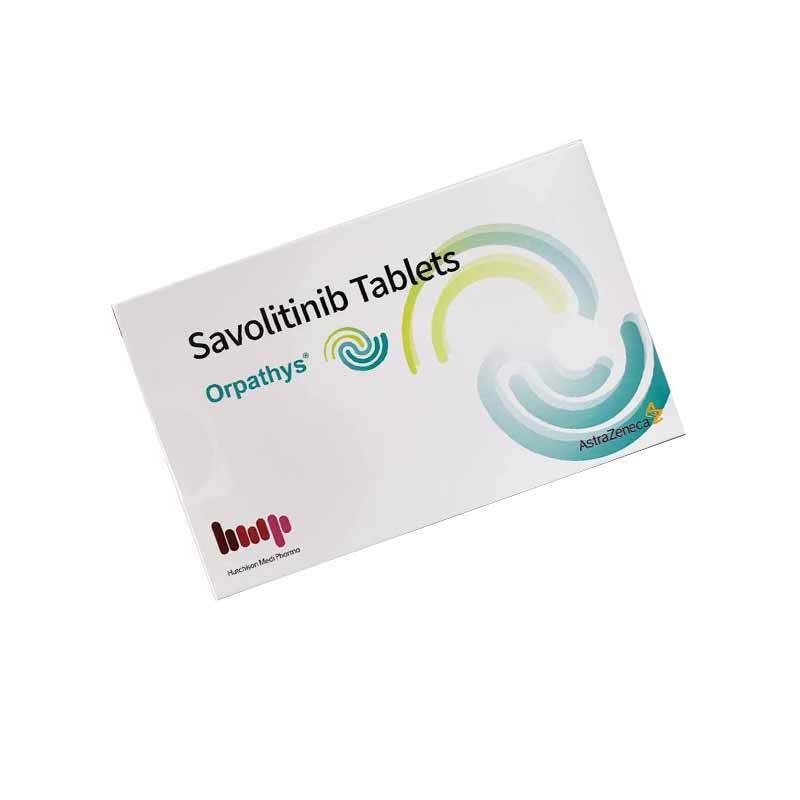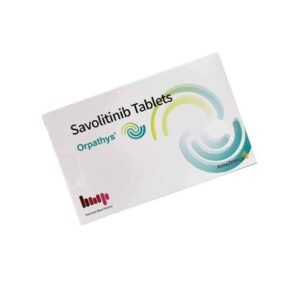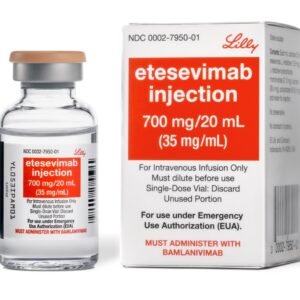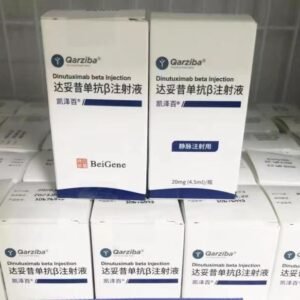Savolitinib Tablets.
Function and indication: This product is used for adult patients with locally advanced or metastatic non-small cell lung cancer with mesenchymal-epithelial transition factor (MET) exon 14 jump mutation who have disease progression after platinum-containing chemotherapy or are intolerant to standard platinum-containing chemotherapy. This indication is conditionally approved based on the objective response rate and duration of response results of a single-arm clinical trial. Full approval of this indication will depend on the clinical benefit of subsequent confirmatory trials.
Dosage and administration: This product should be used under the guidance of a physician with experience in tumor treatment. Before using this product for treatment, it must be clear that a fully validated detection method has detected a positive MET exon 14 jump mutation. Recommended dose and method of administration For patients weighing ≥50 kg, the recommended starting dose is 600 mg, taken orally once a day, until disease progression or intolerable toxicity occurs. For patients weighing <50 kg, the recommended starting dose is 400 mg, taken orally once a day, until disease progression or intolerable toxicity occurs. It is recommended to take this product immediately after a meal at the same time every day. Dose adjustment The doctor should closely monitor the patient during medication and adjust the medication according to the individual patient’s safety and tolerability, including suspending this product, reducing the dose or permanently stopping this product. Special patient populations Hepatic impairment Patients with mild hepatic impairment (total bilirubin <ULN and ALT or AST>ULN; or 1.5×ULN>total bilirubin>ULN and any level of ALT or AST) do not need to adjust the starting dose of this product. There is currently no research data on patients with moderate and severe hepatic impairment (total bilirubin>1.5×ULN and any level of ALT or AST). Therefore, patients with moderate and severe hepatic impairment should use this product with caution under the guidance of a doctor and closely monitor their liver function (see [Pharmacokinetics]). Renal impairment Patients with mild and moderate renal impairment do not need to adjust the starting dose of this product. There is currently no research data on patients with severe renal impairment. Patients with severe renal impairment should take this product with caution under the guidance of a doctor and closely monitor their renal function (see [Pharmacokinetics]). Pediatric patients There is no clinical data on the use of this product in children or adolescents under 18 years of age. Elderly patients aged ≥65 years do not need to adjust the starting dose. For other details, please refer to the drug instructions. Please confirm the method and route of administration before taking the drug, and strictly follow the usage and dosage in the instructions or doctor’s prescription. Improper use may result in ineffective medication or toxic reactions and other adverse consequences.
Adverse reactions:
This instruction manual describes the adverse reactions observed in clinical studies that are judged to be possibly caused by this product and their approximate incidence. Because clinical studies are conducted under various conditions, the incidence of adverse reactions observed in one clinical study cannot be directly compared with the incidence of adverse reactions observed in another clinical study, and may not reflect the actual incidence in clinical practice. The safety data of sirolimus come from 5 clinical trials, with a total of 345 tumor patients receiving monotherapy with this product, of which 338 patients [including 70 non-small cell lung cancer patients with MET exon 14 jump mutations (pulmonary sarcomatoid carcinoma and other non-small cell lung cancer) in the pivotal Phase II study] were exposed to the recommended dose and above (≥400mg, once a day) dose level. Among patients receiving a dose of ≥400 mg, 20.4% of patients discontinued treatment due to adverse reactions; adverse reactions leading to discontinuation (≥1%) were edema (4.7%), nausea (3.6%), vomiting (3.6%), pyrexia (3.8%), aspartate aminotransferase increased (2.4%), alanine aminotransferase increased (2.1%), fatigue/asthenia (1.8%), decreased appetite (1.5%), anemia (1.5%), rash (1.5%), and abnormal liver function (1.2%). 15.4% of patients had dose reductions due to adverse reactions; adverse reactions leading to dose reductions (≥1%) were edema (4.4%), alanine aminotransferase increased (3.6%), aspartate aminotransferase increased (3.3%), nausea (1.5%), fatigue/asthenia (1.2%), pyrexia (1.2%), and abnormal liver function (1.2%). 11.8% of patients (40 cases) permanently discontinued due to adverse reactions; adverse reactions leading to permanent discontinuation (≥1%) were abnormal liver function (3.8%), vomiting (1.5%), increased alanine aminotransferase (2.1%), fatigue/asthenia (1.2%), edema (1.2%), increased aspartate aminotransferase (1.2%), and severe allergic reactions (1.2%). In patients receiving a dose of ≥400 mg, common adverse reactions (≥10%) were nausea (44.7%), edema (40.5%), fatigue/asthenia (31.1%), vomiting (31.1%), decreased appetite (21.0%), hypoalbuminemia (17.2%), anemia (16.6%), pyrexia (15.7%), diarrhea (13.6%), and abnormal liver function (11.8%). Common (≥10%) laboratory abnormalities included elevated aspartate aminotransferase (18.0%) and elevated alanine aminotransferase (16.3%). Adverse reactions occurring in patients receiving doses ≥400 mg are detailed in Table 3. Specific adverse reactions Hepatotoxicity In patients receiving doses ≥400 mg, hepatotoxicity was mainly manifested by elevated aspartate aminotransferase, elevated alanine aminotransferase, hypoalbuminemia, abnormal liver function, elevated blood bilirubin, elevated alkaline phosphatase, and other abnormal liver function tests, most of which were grade 1 to 2; hepatotoxic events of grade ≥3 with an incidence of >1.5% included elevated aspartate aminotransferase (6.2%), elevated alanine aminotransferase (5.9%), and abnormal liver function (5.6%). The median time from the start of medication to the onset of adverse reactions was 31 days. In addition, among the hepatotoxic events, the incidence of drug-induced liver injury (DILI) (all grades) was 1.2%, and the incidence of DILI of grade ≥3 was 0.9%. Among all hepatotoxic events, there was 1 (0.3%) fatal case. Fever In patients receiving a dose of ≥400 mg, fever-related events mainly manifested as fever, chills, high fever, and flu-like symptoms. The median time from the start of medication to the onset of adverse reactions was 20 days, most of which were grade 1 to 2, and no deaths were reported. Severe allergic reactions In patients receiving a dose of ≥400 mg, allergic reactions that met the criteria for serious adverse events included drug hypersensitivity (0.9%), anaphylactic shock (0.3%), and hypersensitivity (0.3%). The median time from the start of medication to the onset of adverse reactions was 15 days, and no deaths were reported. Edema In patients receiving a dose of ≥400 mg, edema-related events included peripheral edema, edema, facial edema, peripheral swelling, swelling, etc. The median time from the start of medication to the onset of adverse reactions was 50 days, most of which were grade 1 to 2; grade 3 edema events with an incidence of >1.5% only included peripheral edema (2.4%), and no deaths were reported. For other details, please refer to the drug instructions. If you feel unwell after taking the medicine, please inform the doctor in time. The doctor will determine whether to stop taking the medicine or take necessary measures according to the severity of the adverse reaction.
Contraindications:
People with a history of severe allergy to this product or those who are allergic to any ingredient of this product are prohibited. Pregnant and lactating women are prohibited
Share:
Products
Our offers
Health Classification
Let us work together to protect precious health
































